Minneapolis is the first major city through which the Mississippi River flows. It’s also home to one of the most fascinating bridges that cross it.
You can still cross this historic bridge today, but the purpose of this former railroad bridge has changed radically.
Let’s take a closer look at some of the most interesting facts about the Stone Arch Bridge in Minneapolis, a historic landmark with some great stories to tell.
1. It’s located near the only major waterfall on the Mississippi River
The Stone Arch Bridge is a major historic landmark located in downtown Minneapolis, the most populous city in the U.S. state of Minnesota with nearly 430,000 inhabitants.
The larger Minneapolis metropolitan area also includes the state capital St Paul and is home to over 3.6 million inhabitants.
The location of the bridge is quite remarkable because it was constructed just east of St Anthony Falls. This is the only major natural waterfall on the Mississippi River.
This river flows for 2,340 miles (3,770 kilometers) from Lake Itasca in northern Minnesota, all the way south to the Gulf of Mexico.
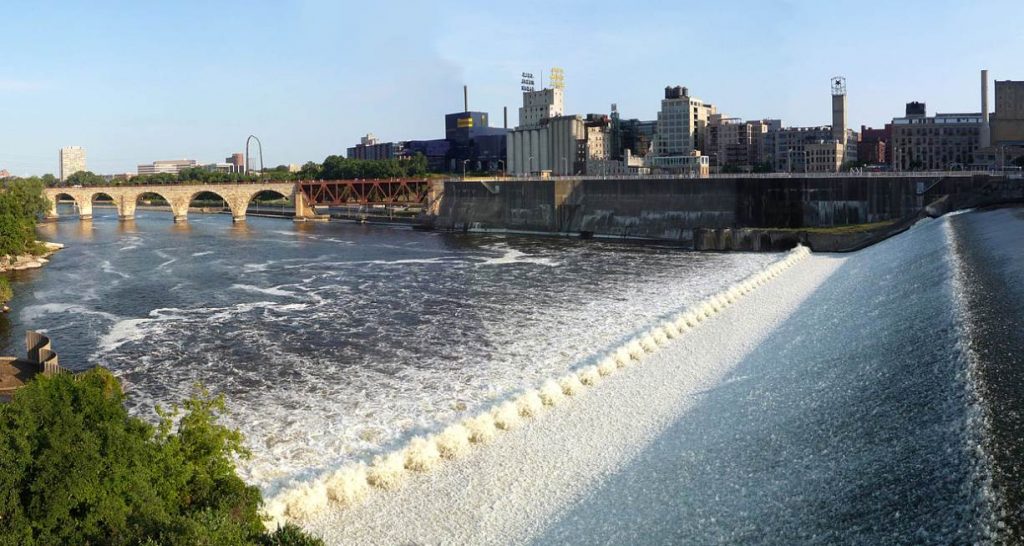
2. It was commissioned in the early 1880s by an ambitious railroad tycoon
The idea of building a railroad bridge in this location came about when railroad tycoon James Jerome Hill (1838-1916) wanted to expand the railway lines in the area.
These eventually formed the Greater Northern Railway company that he managed which ran from St Paul through Minneapolis and to Seattle in the northwest of the country.
Minneapolis was expanded quickly on the western bank of the Mississippi River throughout the 19th century. The same thing happened later that century on the eastern bank.
Hill’s idea was to build a railroad bridge across the river to alleviate the heavy flow of traffic. The only crossing at the time was the Hennepin Avenue suspension bridge.
The bridge was completed shortly after in 1883 and played a major role in the expansion of the Greater Northern Railway lines in the following decades.
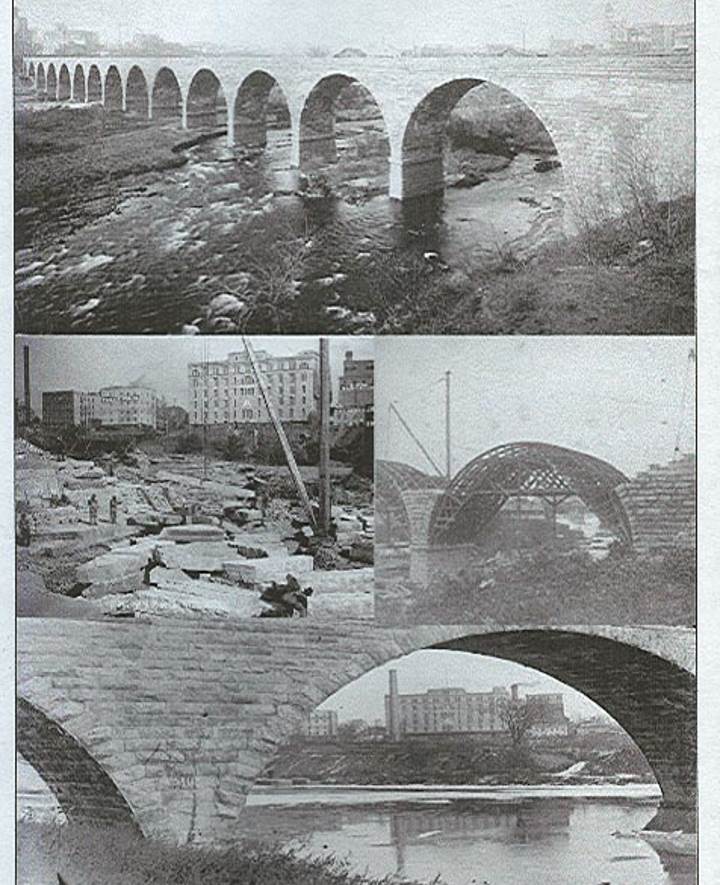
3. It’s the only bridge of its kind on the Mississippi and the second-oldest
The Stone Arch Bridge in Minneapolis is a remarkable structure for several reasons. That’s not just because it helped to explode the city’s growth on the east bank of the Mississippi River in the late-19th century.
As the name of the bridge suggests, it consists of 21 stone arches. It’s the only arch bridge on the Mississippi that’s completely made of stone.
Completed in 1883, it’s also the second-oldest bridge on the river. Only the Eads Bridge in St. Louis, Missouri is older as it was completed between 1867 and 1874.
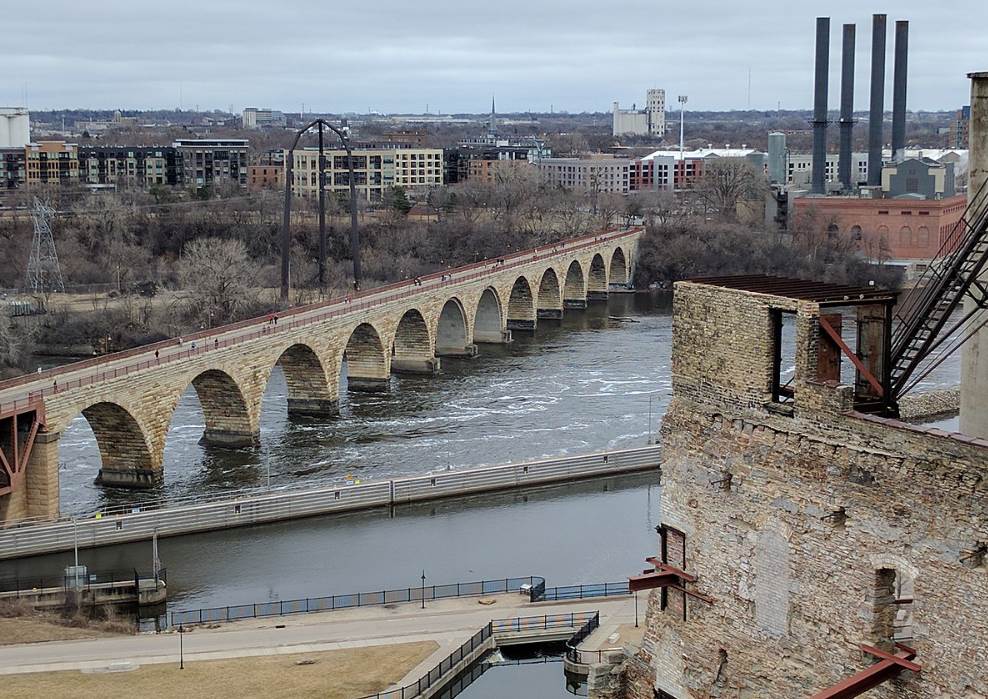
4. The bridge is much bigger than it initially appears to be
The location of the structure wasn’t the easiest spot to construct a bridge. The waterfall just to the west is followed by the Mississippi River taking a sharp turn to the south.
Therefore, the bridge was constructed featuring a curvature that significantly extends it.
Because it was built to serve as a railway bridge it’s fairly narrow with a width of just 28 feet (8.5 meters). It is, however, fairly long with a total length of 2,100 feet (640 meters).
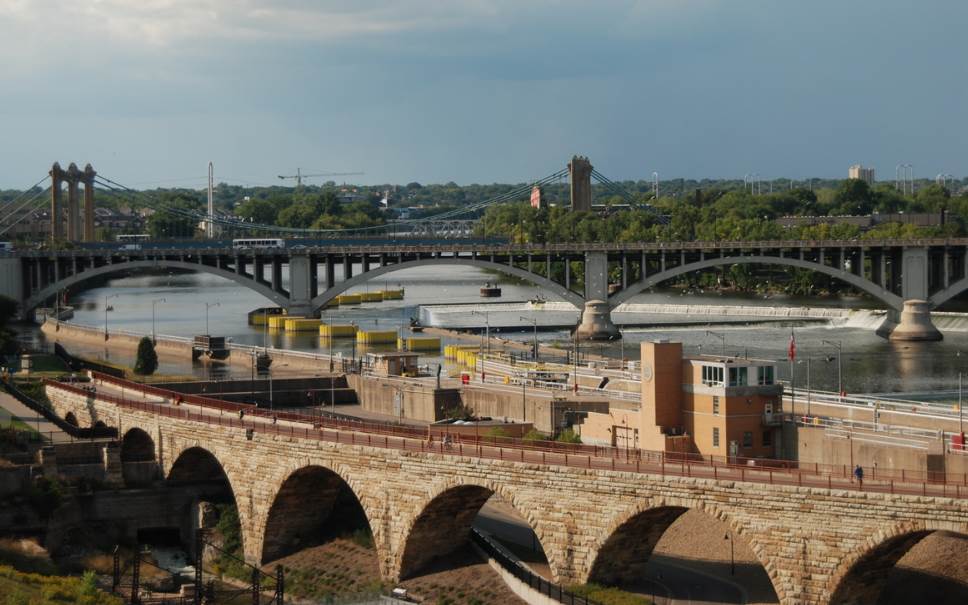
5. The bridge stopped serving its initial purpose in the late 1970s
The Stone Arch Bridge served its purpose as an important element of the Greater Northern Railroad from its opening in 1883 and continued to be used as a railroad bridge until the year 1978.
The main destination for trains crossing the bridge was the Minneapolis Great Northern Depot. This passenger railroad station was located right next to the nearby Hennepin Avenue Bridge.
Because the use of this station gradually declined it ended up being demolished in 1978. The area lay vacant for quite some time and is now occupied by the Federal Reserve Bank of Minneapolis.
Today, the bridge is a great historic landmark in the city and can still be crossed by pedestrians and bicycles. It was completely remodeled for this purpose and has provided panoramic views for visitors since the 1990s.
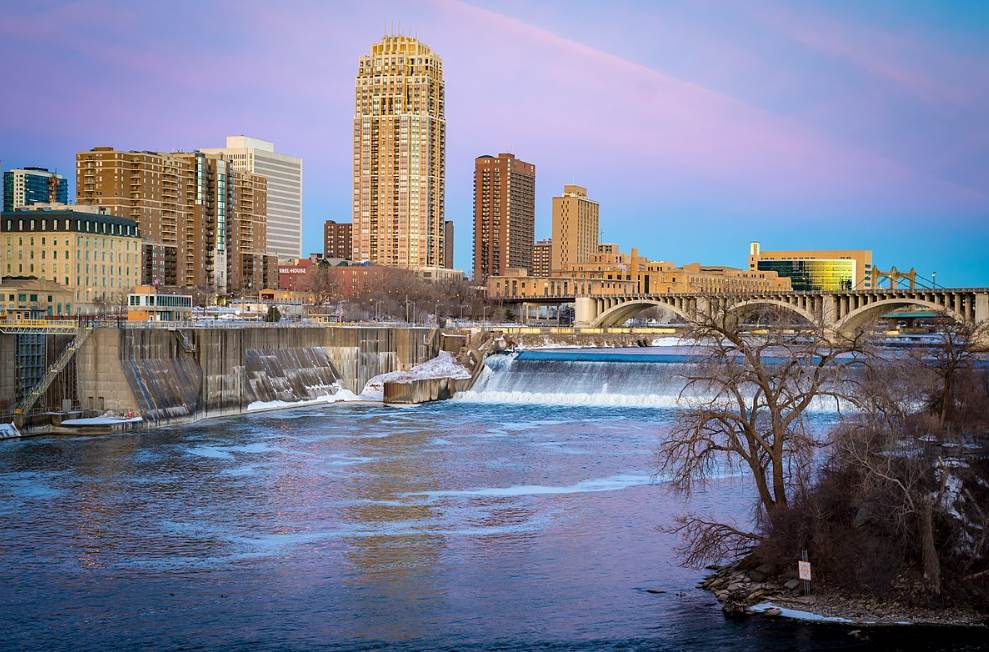
More interesting facts about the Stone Arch Bridge
6. Because the bridge was completely constructed in stone, it raised the price tag of the project significantly. It cost a whopping $650,000 to construct, the equivalent of almost $19 million today.
7. The incredible price tag at the time was the main reason why the bridge was mockingly referred to as “Hill’s Folly.” The laughing quickly ceased when the commercial value of the structure proved to be immense in the following years.
8. The bridge features 21 stone arch spans today, but this used to be 22. One of the stone arches was replaced with a movable truss in 1965, the year that the Upper Lock and Dam were constructed. These locks and truss allow ships to pass through St Anthony Falls.
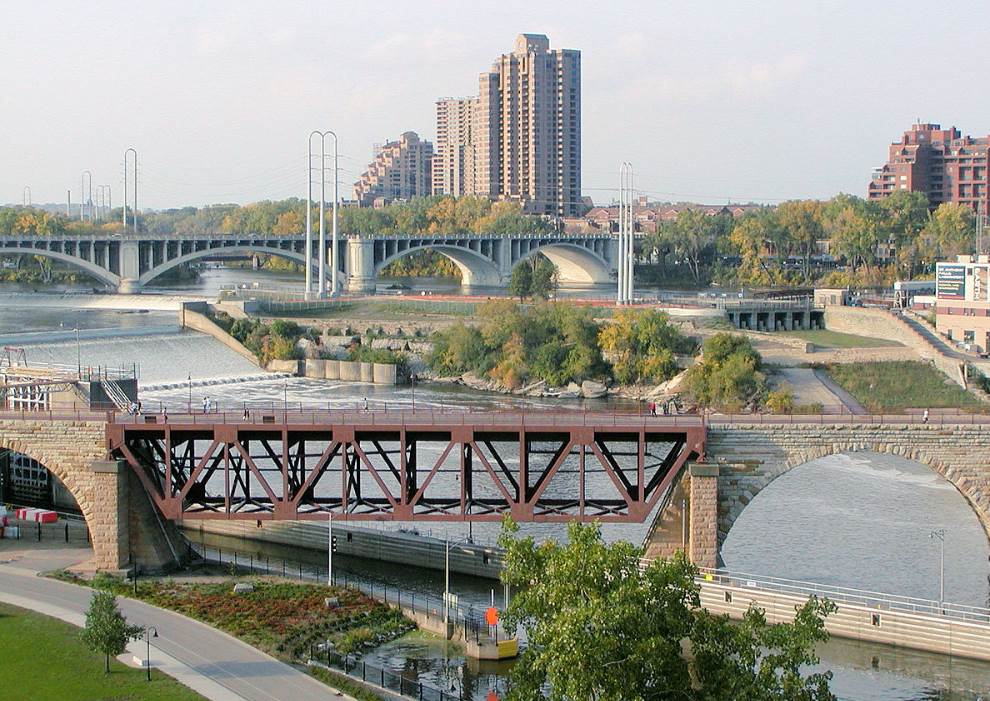
9. Although most stone arch spans are relatively short, the movable steel truss span that is known as the “channel span” sticks out with a length of 197.5 feet (60.2 meters).
10. The bridge was briefly owned by the Hennepin County Regional Railroad Authority between 199 and 1992 before ownership was transferred to the Minnesota Department of Transportation. They transformed the bridge into a pedestrian and bicycle bridge in the 1990s.

11. The bridge was designated a National Historic Civil Engineering Landmark. That’s because of the importance it played in the redevelopment of Minneapolis and the local industry of wheat milling.
It’s fair to conclude that it also serves as a monument dedicated to the vision of James J. Hill, the man who commissioned the structure.
12. The skyline of downtown Minneapolis looks amazing at night, and the bridge forms a great backdrop to it. That’s because the stone arches of the bridge are brightly illuminated at night, just like the nearby skyscrapers in the city.



